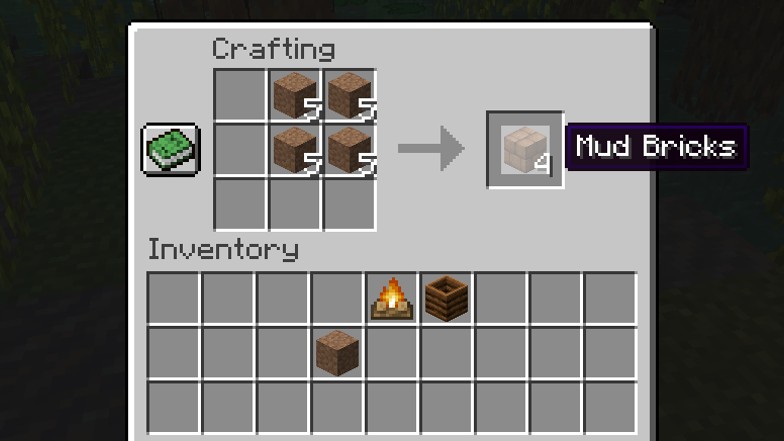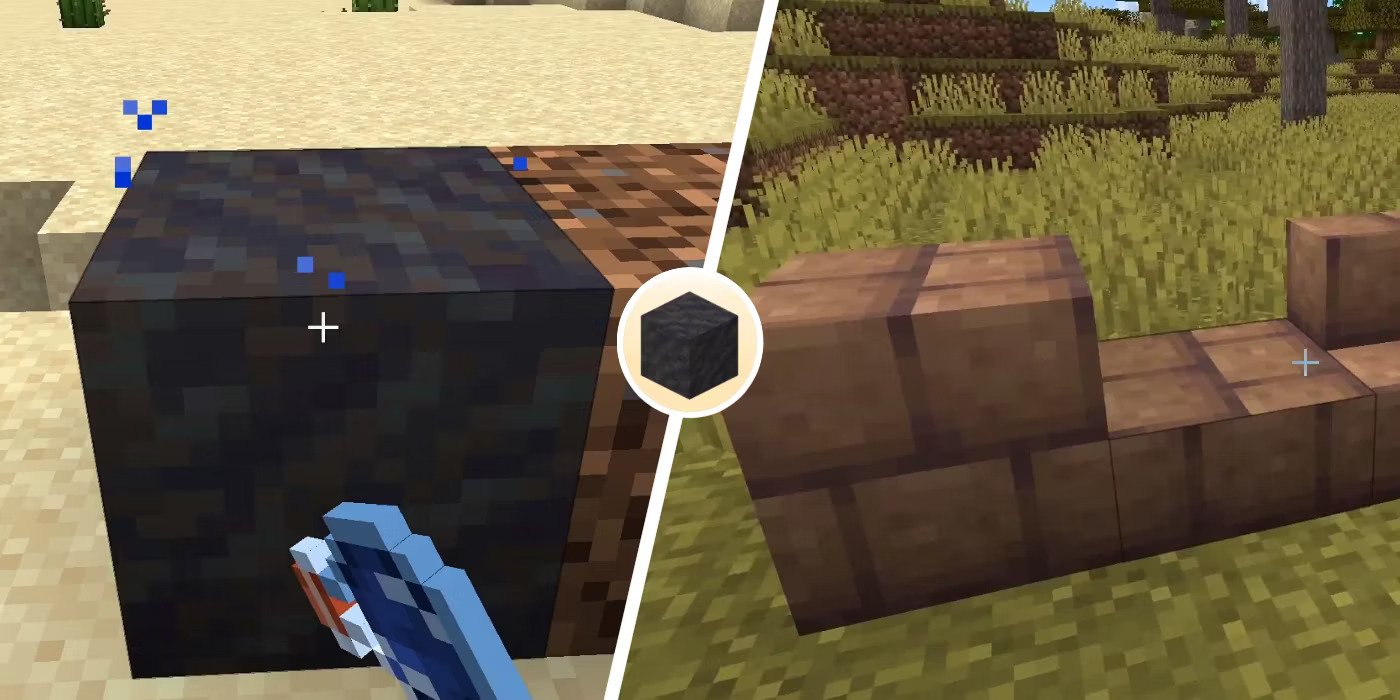In the expansive world of Minecraft, where players are limited only by their imagination, the ability to create and manipulate various materials is at the heart of the gameplay experience. Among the myriad resources and crafting possibilities, mud stands out as a versatile and intriguing element. Despite its humble origins, mud holds the potential to add depth and realism to your virtual creations. This guide will delve into the art of making mud in Minecraft and how it can elevate your building projects to new heights.
Mud, often associated with rustic and natural aesthetics, can be a game-changer for players who seek to infuse their virtual landscapes with a touch of authenticity. From quaint cottages surrounded by lush gardens to immersive farmlands with muddy fields, mud offers endless opportunities for creativity.
Creating mud within the Minecraft universe involves a multi-step process that requires careful planning and resource gathering. To start, you’ll need to locate and collect the necessary components. Clay, commonly found near bodies of water or within swamp biomes, forms the core ingredient of mud. This clay can then be smelted in a furnace to produce bricks. These bricks, when combined with water, yield the final product: mud blocks.
The crafting process, however, is just the beginning. Mud blocks can be strategically incorporated into your constructions to bring an earthy and organic feel. Imagine pathways with mud-covered stepping stones, garden plots with nutrient-rich mud beds, or even quaint village squares adorned with mud textures.
Furthermore, the application of mud isn’t limited to aesthetic enhancements. Mud can play a functional role, such as providing traction for livestock pens or fields, enhancing the ambiance of swampy environments, or serving as a decorative element for structures like wells or outdoor ovens.
Delving into the world of mud crafting in Minecraft opens up exciting avenues for creative expression. This guide will take you through the step-by-step process of creating mud blocks, offer insights into their versatile applications, and inspire you to experiment with various designs and arrangements. Whether you’re an experienced player looking to breathe life into your architectural wonders or a newcomer eager to explore the depths of Minecraft’s crafting potential, mastering the art of mud will undoubtedly prove to be a rewarding endeavor.
Creating your own mud blocks in Minecraft

In the latest Minecraft version 1.19, players have the exciting opportunity to craft their own mud blocks using just a few simple ingredients: water bottles and dirt blocks.
To begin the mud-making process, players need to equip a water bottle and then right-click or press the designated “Use Item” button while aiming at a dirt, coarse dirt, or rooted dirt block. This action triggers a remarkable transformation as the targeted dirt block seamlessly morphs into a singular mud block. It’s worth noting that the water bottle will be consumed in this process. Should you wish to craft multiple mud blocks, be prepared with a sufficient number of water bottles to sustain your creative endeavors.
For those eager to expedite the mud-crafting process, redstone machinery can also play a role. Imagine setting up a dispenser block amply filled with water bottles, strategically positioning it to face a dirt block. With this clever arrangement in place, activating the dispenser will ingeniously use up a single water bottle, automagically converting the dirt block into a mud block. This innovative method eliminates the need for manual water bottle usage, providing a streamlined and efficient way to amass mud blocks.
Whether you opt for the manual water bottle approach or the automated finesse of redstone contraptions, the realm of mud block creation in Minecraft 1.19 presents players with novel possibilities to enrich their architectural endeavors and unleash their imaginative potential.
What Can Players Craft With Mud?

Within Minecraft’s evolving landscape, the introduction of mud blocks brings forth an array of creative crafting possibilities, notably yielding two distinct outcomes: packed mud and muddy mangrove roots. The versatility of these creations extends to more elaborate decorative elements, allowing players to transcend conventional boundaries.
Initiating the crafting journey, the amalgamation of a mud block with a single piece of wheat births the coveted “packed mud” block. This endeavor culminates in a singular block of densely compacted mud, ready to be harnessed for diverse aesthetic applications.
Likewise, the synthesis of a mud block with mangrove roots brings forth the captivating “muddy mangrove roots.” While, at present, these entrancing components may not contribute to further crafting endeavors, their essence lies in their pure decorative allure.
Embracing the artistry that flourishes within Minecraft, the packed mud transcends its origins to unlock a realm of refined creativity. Its potential is unbound, serving as a foundation for crafting an assortment of visually captivating blocks that redefine spatial dynamics and ambience.
As the virtual realm of Minecraft continually expands, the crafting exploits of packed mud and muddy mangrove roots stand as a testament to the capacity for innovation and imagination. Whether as essential building materials or as enchanting embellishments, these mud-born creations offer a glimpse into the boundless potential of Minecraft’s evolving landscape.
How To Create Clay Using Mud
Undoubtedly, one of the most remarkable attributes of mud within the Minecraft universe is its extraordinary potential to metamorphose into clay. The days of scouting along shorelines for scarce pockets of clay, capable of producing a mere handful of bricks, have given way to a far more efficient and inventive process.
To initiate the alchemical transformation of mud into clay, players are tasked with an ingeniously crafted methodology. The procedure necessitates the strategic placement of mud blocks directly above another block that harbors a pointed dripstone beneath it. The pointed dripstone, a natural geological element predominantly found adorning the ceilings and floors of dripstone caves in stalactite and stalagmite formations, assumes a pivotal role in this process.
When carefully harvested and then positioned on a cave ceiling, these pointed dripstones channel their intrinsic water-dripping capabilities to the blocks situated above them. It is within this ingenious interplay of water and geological elements that the magic transpires. The mud blocks, positioned precisely two units above the pointed dripstone, embark on a gradual yet certain evolution into clay.
This transformation, though a marvel in its own right, requires a degree of patience. The conversion process unfolds over a span of several minutes. To capitalize on this innovation, players are advised to amass a substantial collection of pointed dripstone before commencing the transformative ritual. By embracing a strategy of bulk conversion rather than incremental adjustments, the transition from mud to clay becomes a truly efficient endeavor.
As the metamorphosis nears its completion, the mud block undergoes its magnificent transition, transmuting into precious clay. The newly formed clay is ripe for harvest, and in its place, a fresh mud block can be positioned, thus perpetuating the cycle of transformation.
In essence, the transformation of mud into clay through the synergistic collaboration of pointed dripstone and Minecraft’s dynamic world underscores the game’s immersive complexity, inviting players to explore and harness the very essence of natural processes within this digital realm.
The Natural Habitat of Mud in Minecraft
Indeed, the origin of mud blocks in Minecraft lies in the harmonious fusion of dirt and water. Yet, there exists a captivating revelation about their favored abode within the untamed expanses of the game. This revelation takes form in the enchanting embrace of the Mangrove Swamp biome, an ecosystem teeming with life and opulence. In this verdant realm, resources abound, and the symbiotic dance of nature is vividly on display.
Venturing into the heart of the Mangrove Swamp biome unveils a sanctuary where mud blocks flourish with unrivaled abundance. Amidst the luxuriant foliage and the gentle lull of water, these mud blocks find their true home, harmoniously integrated into the landscape. Whether your quest leads you to gather a cache of mud for your grand crafting designs or simply to immerse yourself in the mystique of this mystical locale while casually scavenging, a sojourn to the Mangrove Swamps is an expedition well worth undertaking.
Here, the allure of the mangrove ecosystem beckons, offering not only the raw materials you seek but also an opportunity to bask in the serene magnificence of a habitat where mud reigns supreme. It is within these swampy waters that the essence of Minecraft’s captivating diversity comes alive, inviting you to partake in its embrace and carve your own narrative amidst the mud-draped wonders of the Mangrove Swamp.
The Many Uses of Mud in Minecraft
Mud, a recent addition to the Minecraft universe, has quickly proven its versatility, offering a plethora of applications that extend far beyond its humble origins. Here are some of the captivating uses that players can harness from this remarkable resource:
- Building Blocks: Foremost among mud’s capabilities is its potential to serve as an unconventional building material. Mud blocks can be employed as a distinctive aesthetic element, adding a touch of rustic charm to structures. With mud as a cornerstone, architectural endeavors take on an earthy, organic appeal that seamlessly blends with the environment.
- Farming Enhancement: Mud, with its high moisture content, is the ideal substrate for agriculture. In the realm of Minecraft, it can elevate farming plots, providing optimal conditions for crop growth. Whether you’re cultivating essential crops or indulging in the pursuit of decorative flora, mud offers an unparalleled canvas for your green thumb.
- Ambiance Amplification: Mud is more than a static block; it’s a dynamic tool for crafting immersive environments. Incorporate mud into wetlands, marshes, and swamp biomes to craft authentic landscapes that mirror real-world ecosystems. This infusion of realism adds depth and intrigue to the Minecraft world.
- Pathways and Terrain Detailing: Carve pathways adorned with mud-covered stepping stones, mirroring the charm of cobblestone streets of yore. Beyond paths, utilize mud blocks to craft terrain detailing, shaping landscapes with a tactile realism that beckons exploration.
- Functional Design: Mud’s tactile properties extend to functionality. Design mud pits for livestock, incorporating a tactile and visual dimension to your animal husbandry efforts. Additionally, its application in creating mud-related features like wells, fountains, or rustic ovens adds depth to your world’s functional aspects.
- Naturalistic Water Features: The combination of water and mud forms an exquisite duo for crafting serene water features. Embrace the calming allure of mud-bottomed ponds or artfully integrated mud banks, transforming your creations into soothing havens.
- Decorative Variance: Pair mud with other elements to create decorative variance. Integrate it with wood, stone, or other materials to forge unique textures and patterns, contributing to the aesthetic richness of your structures.
- Roleplay and Storytelling: Mud’s associations with natural settings and rural landscapes make it a potent tool for roleplay and storytelling. Whether you’re constructing a humble village or an expansive kingdom, the inclusion of mud imparts narrative authenticity.
- Experimental Exploration: The novelty of mud lies in its uncharted potential. As the Minecraft community continues to explore new applications, players can experiment with mud to uncover unexpected uses, inspiring others to follow suit.
In the vibrant tapestry of Minecraft’s creative canvas, mud stands as a versatile medium, awaiting the imaginative touch of players to shape landscapes, craft stories, and create masterpieces that transcend the ordinary. The many uses of mud showcase its transformative power, turning a seemingly simple resource into an extraordinary tool for expression and ingenuity.
Conclusion!
In conclusion, the journey to create mud within the enchanting world of Minecraft unveils a unique fusion of creativity and resourcefulness. Through a strategic combination of water bottles and dirt blocks, players can orchestrate the birth of this distinctive material, opening the gateway to a realm of diverse possibilities. The process begins with the acquisition of water bottles, a fundamental ingredient in the mud-making equation. Armed with these vessels, players embark on a quest to collect dirt blocks, an abundant resource found across various biomes. Armed with both components, the crafting process commences with the interaction between water bottles and dirt blocks, a simple yet ingenious gesture that yields mud blocks.










